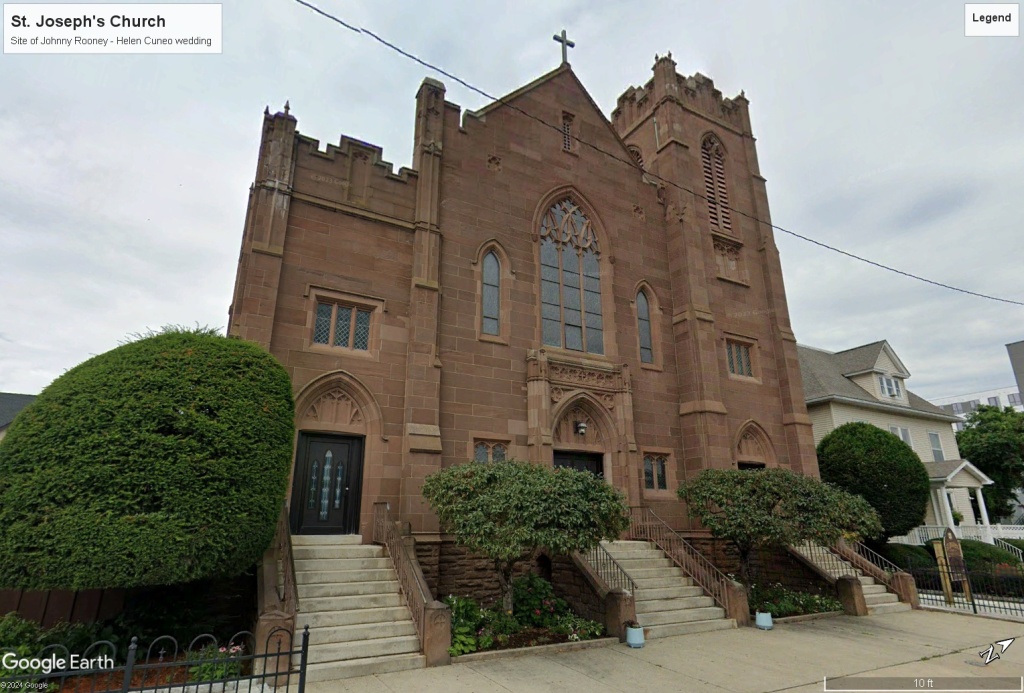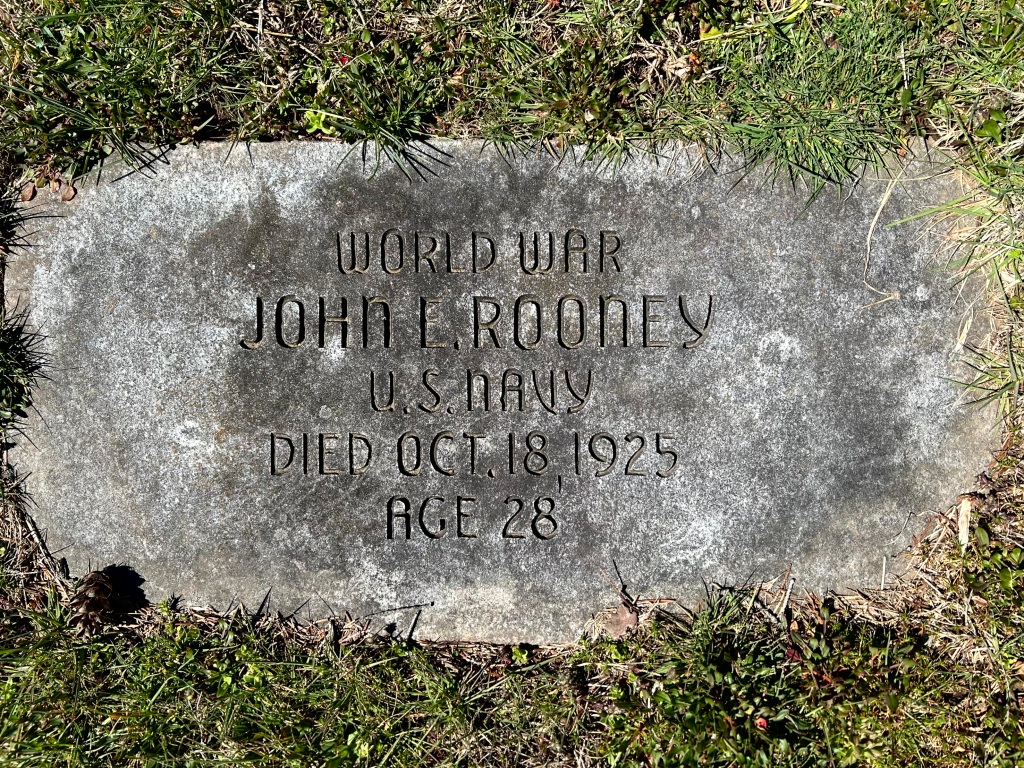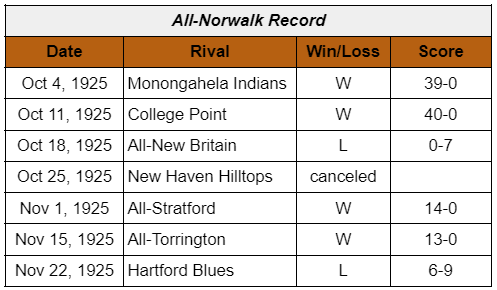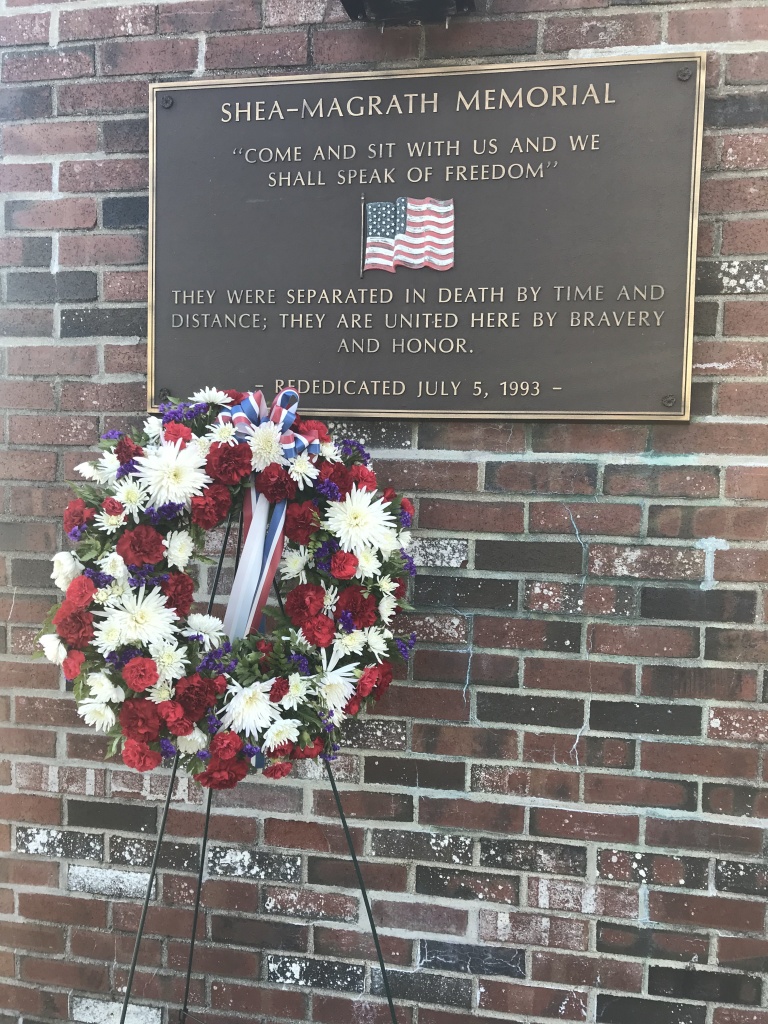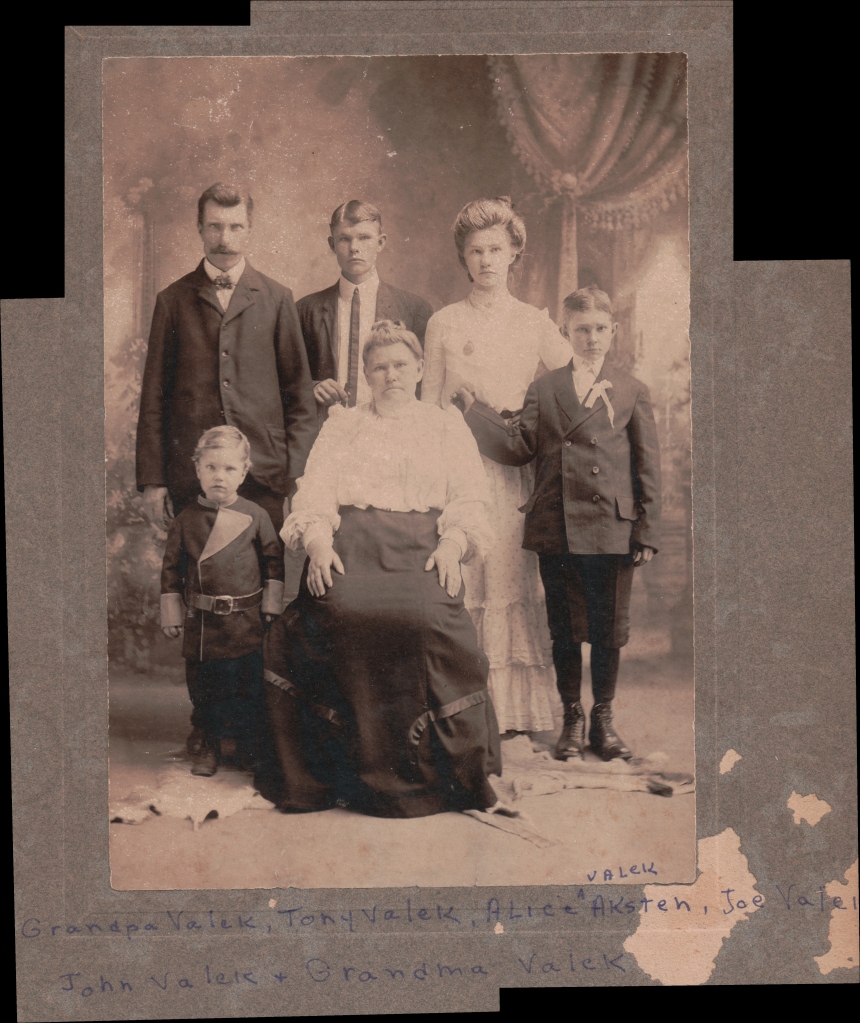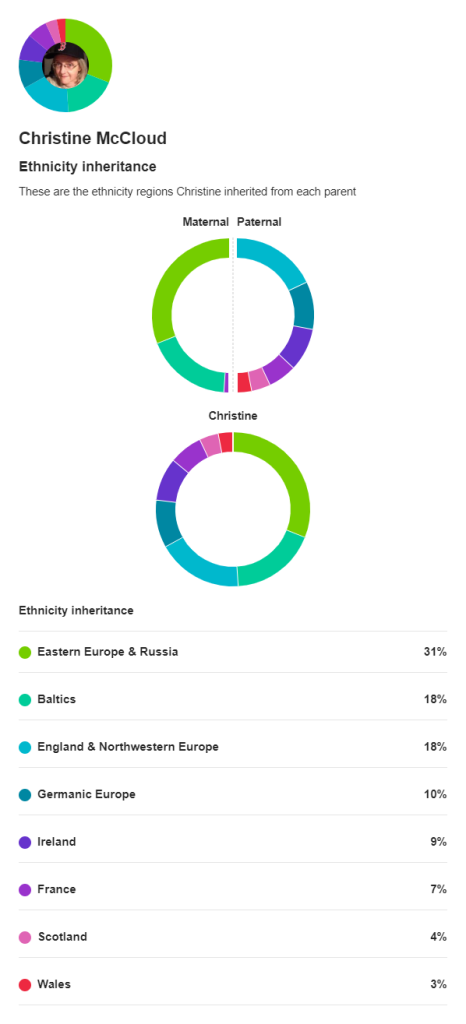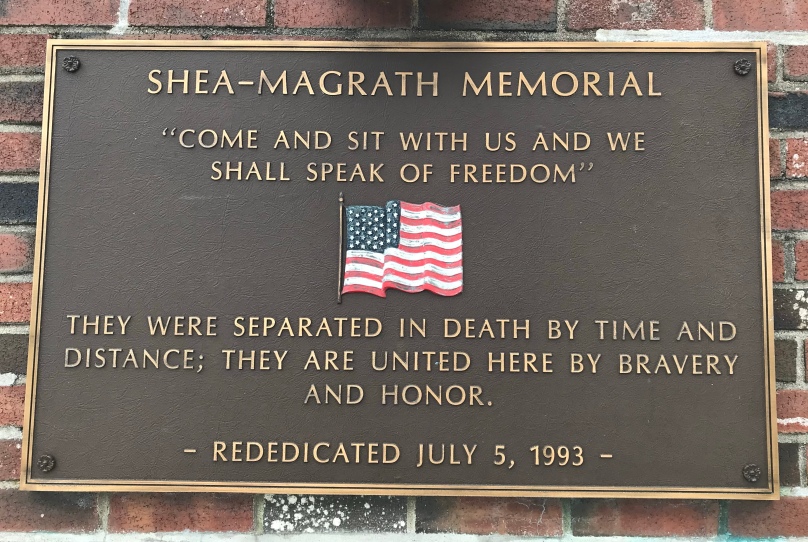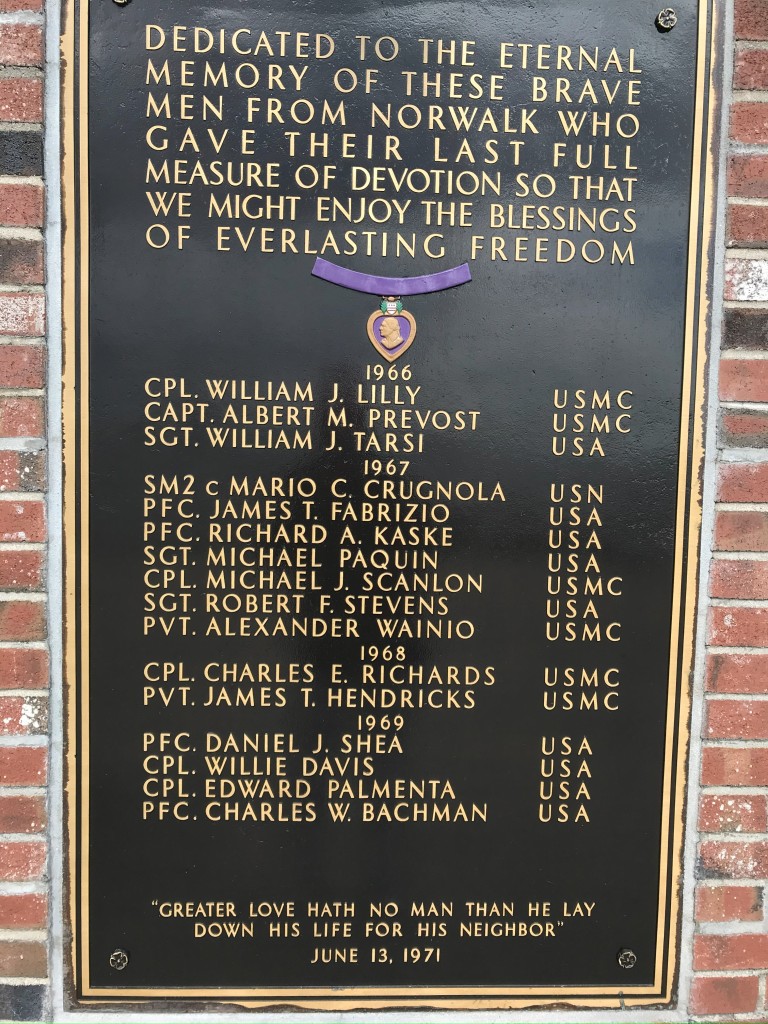Did you ever go down the rabbit hole of an internet search and discover something pretty fascinating? This is exactly what happened as I stumbled upon what I’m about to write – the fact that Norwalk, Connecticut once had a semi-professional football team! As I researched this fact, I came across an even deeper story.
We begin in 1879 or perhaps early 1880. A young man named John Edward Rooney immigrated from Ireland to the United States. By June 7, 1880, he was boarding with a family named McDermott at 12 Clark Street in Danbury, Connecticut and working as some kind of finisher. By around 1890, he married Ann (“Annie”) Lahey from nearby Weston. They ended up moving to Norwalk and had four children: Francis (Frank), Edna, John Edward (Johnny), and Frederick (Fred). John supported the family as a hatter at various companies; Norwalk had been prominent in the hat-making industry.
By 1902, the Rooney family settled on West Cedar Street, near Ivy Place in Norwalk. Sometime after 1910, daughter Edna ended up marrying James Sutton, and the boys still lived at home, eventually taking jobs in a shoe company (Frank), Southern New England Telephone (Johnny), and at a submarine yard (Fred).
On January 25, 1916, tragedy struck the family: John came home from work sick and ended up dying that night. I suppose the sons then supported the family, at least until World War I broke out. Frank ended up serving in the 265th Aero Squadron, and Johnny joined the Navy. In fact, you can even see their names on Norwalk’s World War I memorial here.
But now our story starts to follow Johnny. He continued to work at SNET and displayed his athletic abilities at company picnics. After 1918 more of his spare time was taken up by Norwalk’s new football team, the Norwalk Tigers, which played at the Baxter Grounds in the Rowayton section of Norwalk, I believe where the amusement park used to be. Johnny quickly became a star player for the Tigers, playing the right halfback, left halfback and left tackle positions at different times. The Norwalk Hour wrote: “He is the fastest runner on the Tiger team and one of the greatest runners in the game in this part of the state. His brilliant running is mainly responsible for the large crowds that come weekly to witness the Tigers play.” The Tigers, dressed in orange and black (of course!), went on to win many games, thanks to Johnny scoring many touchdowns. Brother Fred also joined the Tiger team in 1921, playing right halfback when Johnny wasn’t.
In 1922 love had entered Johnny’s life. He married Helen Frances Cuneo at St. Joseph’s Church on South Main Street on September 11. I don’t know how they met; perhaps Helen saw Johnny at one of the Tiger games? In any case, they settled into a home of their own on West Cedar Street, but later moved to 119 South Main Street probably around the time their son Robert Francis was born in December 1923.
The Norwalk Tigers football team disbanded around this time, but a new semi-pro team, the “All-Norwalk” team was formed in early September 1925. Coached by William H. Brennan, a former Villanova University star, the team would play at the Baxter grounds. The Norwalk Hour described their “natty uniforms” as “brown jerseys, with white rings on the cuffs and brown stockings with white rings on the calf”. The lineup included players from all around the Norwalk area. Of course Johnny was one of the bigger names that joined this team !
On October 11 right after the start of the game against College Point, Johnny was tackled and his right arm was “pinned under him in such a manner that it snapped.” He was rushed to the hospital to have it set. This was certainly the end of the season for Johnny, but he seemed to try to keep going. Just five days later, he went to Dr. Robert M. Wolfe with a fever and some stiffness. Dr. Wolfe gave Johnny an anti-toxin shot and ordered him to go home to bed. Instead, Johnny went to the Norwalk High School – Greenwich High School game with some friends. Perhaps he felt that getting out would be good for him, but he went home feeling more stiff.
It ended up being lockjaw, otherwise known as tetanus. Johnny got worse and worse as he was tended by Dr. Wolfe until he died at home at 4:30 the morning of October 18. He was only 28 years old. News must have spread quickly, for the All-Norwalk team paid tribute to him prior to their game that day against All-New Britain at New Britain’s Willow Brook Park. With Fritz Kennett playing Johnny’s old position, All-Norwalk lost the game, 0-7. The team must have been feeling Johnny’s absence as a friend and as a player.
Johnny’s funeral was held on October 21, starting at home, then with a mass at St. Joseph’s church. His wife, son, mother and siblings were surrounded by his many friends from the All-Norwalk Team, All-Stamford Team, Springwood Football Club, a delegation from the Knights of Columbus, the Veterans of Foreign Wars No. 603, and co-workers from Southern New England Telephone. Johnny was laid to rest in the family plot at Saint Mary’s Cemetery, while across town, the flag on Norwalk Green flew at half mast in honor of this veteran.
Although their hearts were probably devastated from the loss of their teammate and friend, the All-Norwalk team found a good way to deal with it: they were going to donate the proceeds of their October 25 game with All-New Haven to Helen. Unfortunately, that game got rained out, so the November 1 game against All-Stratford would be the benefit. Helen later thanked them for the “hearty response” at this game. By December 8, $1,502.33 was given to Helen to help her out – that’s worth over $25,000 today!
Unfortunately, the All-Norwalk Football Team only lasted another month. They played their last game on November 22, 1925 and were disbanded due to “insufficient support”. It seems that the other teams in their league eventually had the same fate, with the exception of the Hartford Blues, which became an NFL team in 1926, its only NFL season.
After a few years of having Johnny’s mother Ann living with her and little Robert, Helen sold the house on South Main Street in November 1929. She and Robert ended up living with her sister Edith at 8 Concord Street, and Helen became a working woman as an office manager and bookkeeper. In fact, she was one of three incorporators of the Fred W. Connolly Co. in 1930. Perhaps some of her savings enabled her to do this?
In any case, Helen’s relationship with Fred Connolly slowly evolved from business to love: they were married on June 28, 1942. It was probably around this time that Robert, now “Bob”, graduated from Norwalk High School. His high school yearbook entry indicates that he was thriving: voted “best looking”, President of the Student Council, and involved in sports: intra-mural basketball…and quarterback of the football team. I couldn’t help but wonder if Helen must have held her breath each time her son took the field. But Bob survived and lived until 2019.

